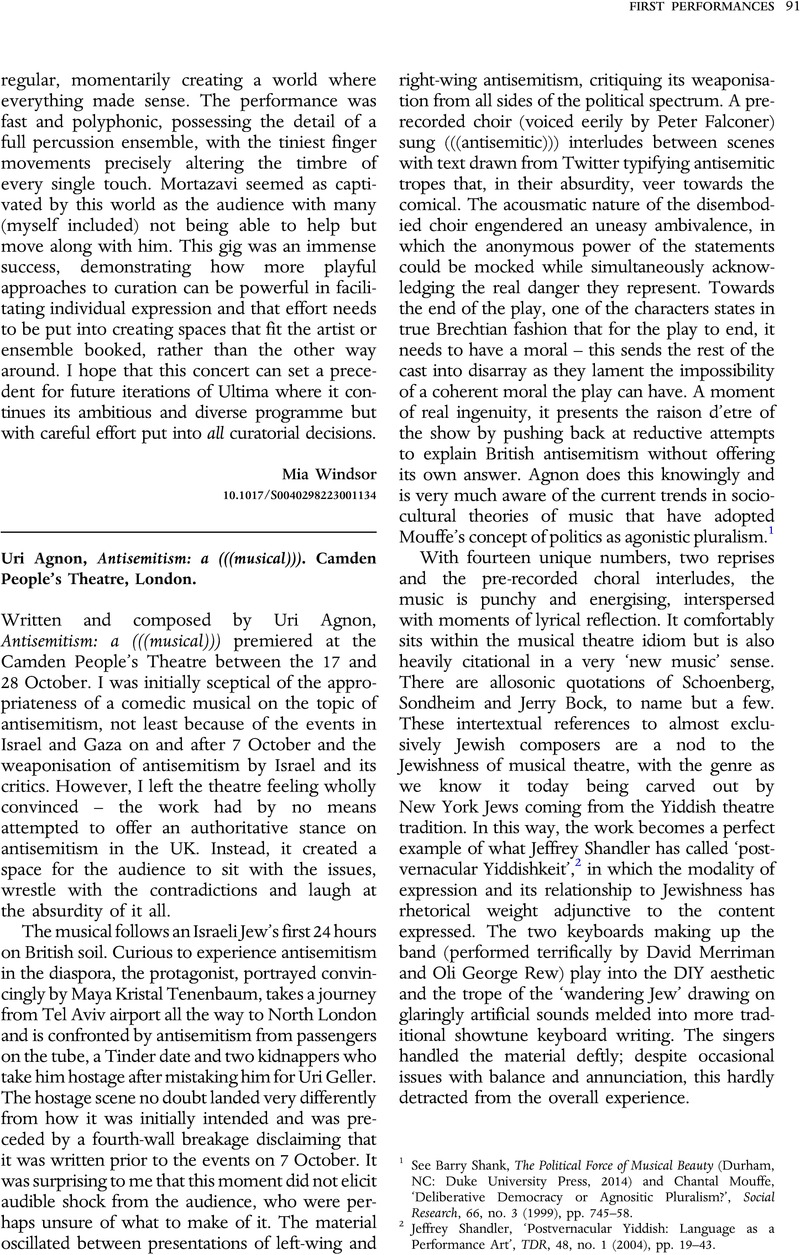No CrossRef data available.
Published online by Cambridge University Press: 01 April 2024

1 See Shank, Barry, The Political Force of Musical Beauty (Durham, NC: Duke University Press, 2014)Google Scholar and Mouffe, Chantal, ‘Deliberative Democracy or Agnositic Pluralism?’, Social Research, 66, no. 3 (1999), pp. 745–58Google Scholar.
2 Shandler, Jeffrey, ‘Postvernacular Yiddish: Language as a Performance Art’, TDR, 48, no. 1 (2004), pp. 19–43CrossRefGoogle Scholar.
3 Agnon, Uri, ‘On Political Audiences: An Argument in Favour of Preaching to the Choir’, TEMPO, 75, no. 296 (2021), pp. 57–70CrossRefGoogle Scholar.